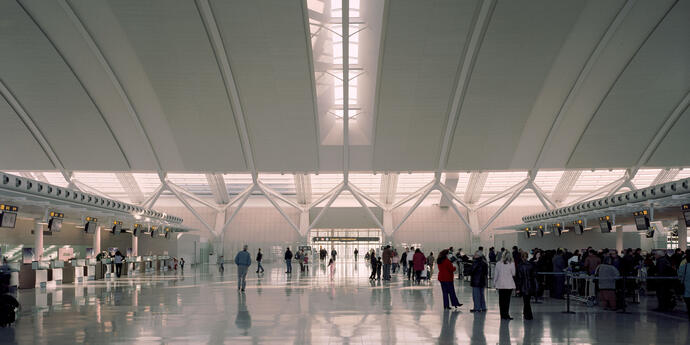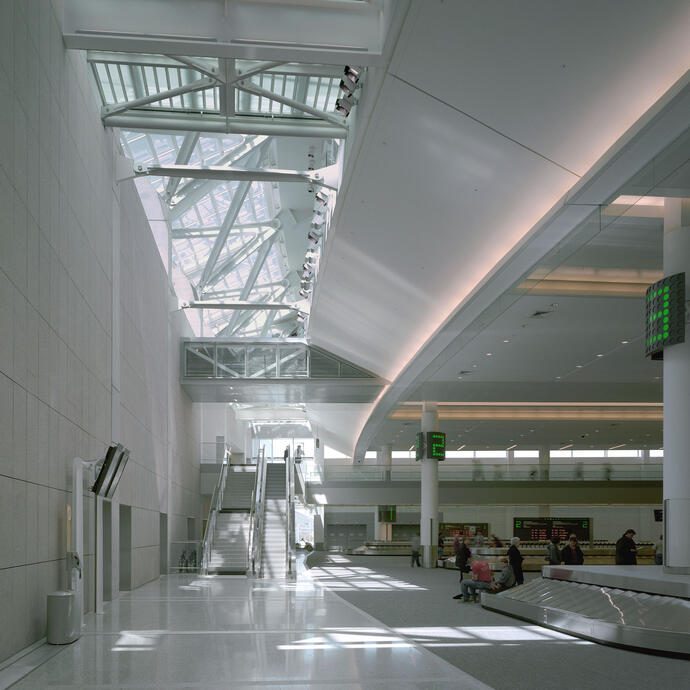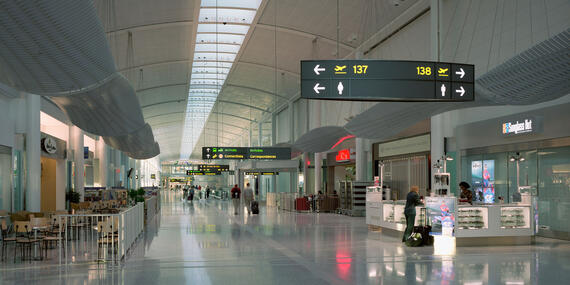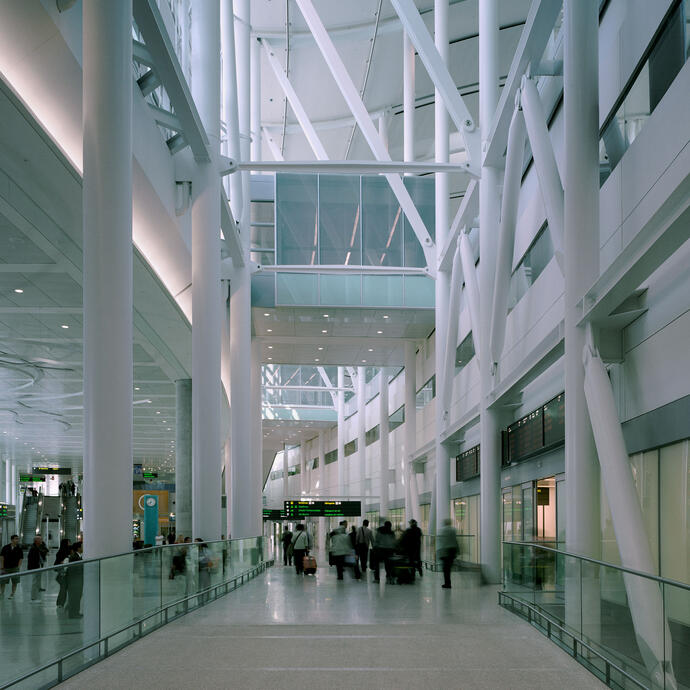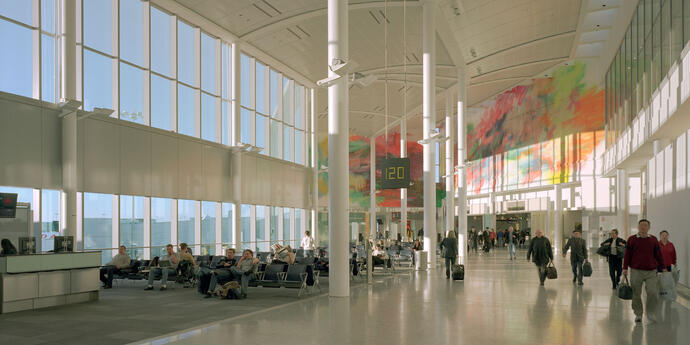
Canadian Consulting Engineers, Award of Merit, Transportation (2001)
Design Exchange National Post Design Exchange Award, Honorable Mention (2004)
Society for Environmental Graphic Design, Merit Award for Signage and Wayfinding (2004)
Coming, going, and staying.
Airport terminal buildings are some of the largest and most populated multi-functional buildings in the world. Terminal 1 at Lester B. Pearson is Canada’s largest airport, the hub for more than 400,000 flights per year and supporting more than 30 million passengers. The terminal has an area of approximately four-million square feet, accommodating retail shops and 80 gates. There are many different uses and occupancies within Terminal 1, including public assembly, private office space, back-of-house facility service space, secure and non-secure areas, RCMP, CATSA, and police detention areas.
Smith + Andersen provided mechanical engineering for the project through a joint venture arrangement.
Coming, going, and staying.
Airport terminal buildings are some of the largest and most populated multi-functional buildings in the world. Terminal 1 at Lester B. Pearson is Canada’s largest airport, the hub for more than 400,000 flights per year and supporting more than 30 million passengers. The terminal has an area of approximately four-million square feet, accommodating retail shops and 80 gates. There are many different uses and occupancies within Terminal 1, including public assembly, private office space, back-of-house facility service space, secure and non-secure areas, RCMP, CATSA, and police detention areas.
Smith + Andersen provided mechanical engineering for the project through a joint venture arrangement.
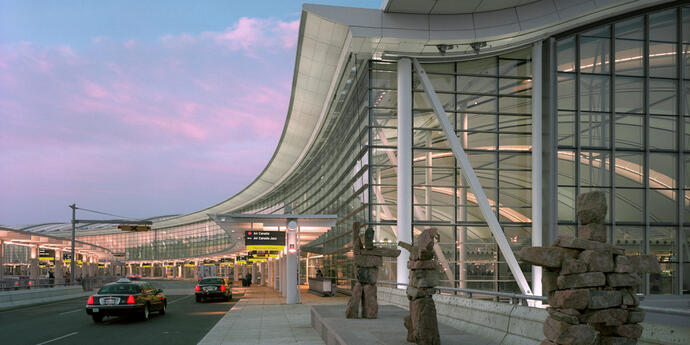
Travel means flexibility.
Each terminal building presents its own unique challenges, but there are common elements affecting the mechanical design that are encountered on all projects. The mechanical systems are selected to suit a variety of zones and conditions, and must be flexible enough to accommodate large swings in population – both relatively stationary (at check-in counters, security checkpoints, baggage claims and gates) and in continuous circulation (such as corridors). Such occupancy swings, which may occur hourly, daily and seasonally, impacts the size of air handling units as well as thermostatic zone control.
The new terminal requires upwards of 15,000 tons of cooling, a system that will be supplied through the Central Utilities Building.
